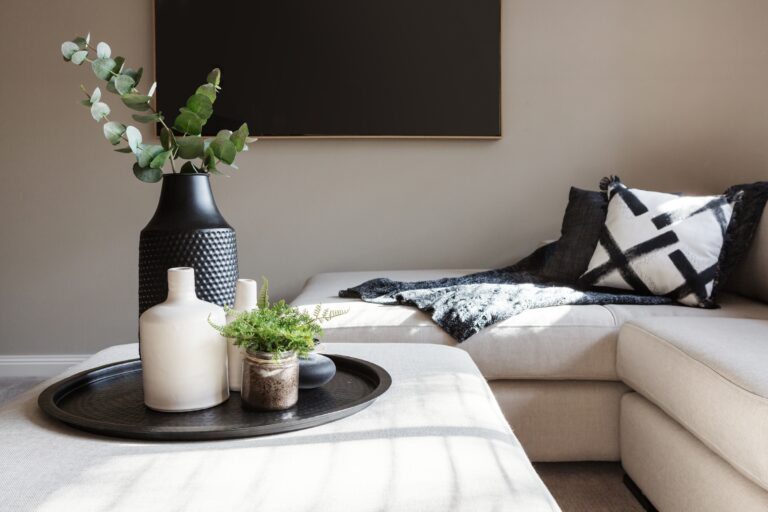As an interior designer, you probably have big dreams for your business. The right business strategy can get you there, whether you want to serve more clients, increase your income, or both.
What exactly is a business strategy? Think of it as a specific plan of action that helps you create your ideal company and lifestyle. It’s made up of several pieces that, when put into motion, transform your business. Most interior design business strategies include creating an enjoyable and profitable business model, reaching more clients, and streamlining backend processes.
Before we dive in, keep in mind his blog post is designed to serve as a resource for established interior designers, but hoping to grow and elevate their business. If you’re just starting out in the interior design industry, this beginner’s guide will be a more helpful resource at this stage.
Table of Contents
1. Optimize your interior design business model
Interior design is an expansive industry, and no two businesses are exactly alike. Creating a robust business model will help you determine which tasks to drop and which to prioritize, as well as ensure your services are crystal clear to your clients.
If you’re working on your business model for the first time, start by reading through our interior design business model guide for advice and inspiration.
If you’re reworking your current business model, start by examining your workload to see where you can streamline and expand. Are there any tasks that aren’t particularly serving you or your business goals, or that you simply dread? Are there more services you’d like to offer? Use your answers to clarify what your business does.
Next, think about who your ideal client is and how you deliver work to them (virtually, in-person, hybrid, etc.). This will clarify who you serve and how you serve them. What your business does, who you serve, and how you serve them, will form the foundation of your business model.
2. Set regular goals (and stick to them)
It’s fun to dream about business growth, but only well-thought-out goals can get you there. To ensure your goals are impactful, consider following a framework like SMART (which stands for specific, measurable, achievable, relevant, and time-bound). This guide from Design Ink Co is filled with helpful ideas on effectively using SMART goals in the design industry.
Once you’ve set your goals, commit to them with a structured and motivating plan. Start by visualizing success: create a vision board that embodies each goal in vivid detail. Make these goals an unmissable part of your day by writing them on the first page of your planner or setting your phone background to a visual that represents your vision. Develop a habit of revisiting your goals regularly—set weekly check-ins to assess progress and adjust as needed. Consider adding accountability by sharing your goals with a mentor or joining a community of like-minded entrepreneurs.
3. Stay focused on your ideal client
As you continue to streamline your business, it’s essential to maintain laser focus on your ideal client. Start by asking yourself questions:
Who is my ideal client? How old are they? Where do they live? What do they do for work? What is their annual salary range? What do they need from their home? What do they struggle with? How can I help?
Use your answers to create a persona for your ideal client. Make sure your services fit their needs and address their pain points, and ensure all your marketing materials and communications convey this.
Not sure where to begin while forming your ideal client persona? This guide from Alycia Wicker is filled with personas for you to explore and identify whether any resonate with your professional interests and abilities.
4. Market where your ideal clients are
There are several steps to marketing as an interior designer. However, when it comes to strategy, one of the most critical pieces is to appear in the right places. Instagram and Pinterest are givens, but every business can benefit from expanding its social media reach. If you’re serving local families, for example, you may need to spend time in neighborhood Facebook groups. If you’re working with commercial businesses, make sure you’re present on LinkedIn.
Should you advertise your business on every social media site? It won’t hurt, but keep your focus on where your ideal clients spend their time. For more digital marketing strategies and advice, check out this DesignFiles guide.
5. Use SEO to bring clients to your inbox
By optimizing your website to show up in the most common Google searches for your ideal, you can bring perspectives straight to your inbox.
To implement SEO for your business, start with keyword research. Which Google searches do you want to show up in? Some ideas include, “interior designer near me,” “interior design (insert city name),” “kitchen and bath e-designer,” etc.
Once you have your keyword list, implement words in your website copy in a way that feels organic. Then, find additional ways to add meaningful content that includes each keyword (such as blog posts). Within this content, add links to other high-quality interior design sites. Avoid using competitor content to ensure you’re not boosting their SEO placement instead of yours.
It’s also essential to request reviews from each of your clients, since positive reviews boost your website’s search engine visibility.
Once you’ve done your initial SEO work, keep searchability as a priority in your business plan. By continuing to strategize with SEO throughout your career, you’re more likely to see lasting results.
6. Create content that positions you as an industry expert
Creating quality content is a powerful way to build trust and establish your reputation as an expert in the interior design industry. By sharing valuable insights, practical tips, and behind-the-scenes looks at your design process, you demonstrate both your knowledge and your unique approach to style. Content that resonates with potential clients—like blog posts, video tutorials, or social media updates—helps them envision what working with you might be like. Over time, this consistency not only enhances your credibility but also sets you apart in a competitive market, positioning you as the go-to resource for design expertise and inspiration.
7. Collaborate with brands, builders, and fellow designers
Building relationships with brands and builders can significantly increase your client base. By getting to know and working alongside other designers, you’ll have the opportunity to learn more about the industry and the best ways to grow your business.
How can you form new collaborations? Start by building relationships with the individuals and companies you want to work with. We love this guide from the Visualist app on forming product and brand partnerships.
8. Perfect the discovery call
While great marketing is essential to persuade a new client to make first contact, actually landing that client means showing them exactly why you’re the designer they need. A well-structured discovery call is key to making this impression.
While every discovery call is different, having a clear framework in place will keep you confident and focused. Plan in advance what you’ll highlight about your business, the questions you’ll ask to uncover your client’s vision, and how to guide the conversation toward closing if it feels like a strong fit. Here’s a list of proven discovery call questions to get you started.
9. Find the Right Interior Design Business Software
Perfecting your interior design strategy is about more than just your actions,but also the quality of tools you choose to support your work. The right interior design business tools can streamline key areas of your workflow, freeing up valuable time for creative design, strategic marketing, or collaborative projects. By leveraging specialized interior design software, you can boost efficiency, cut costs, and improve organization—all of which allow you to take on more clients with confidence.
Check out our ten business software recommendations here.
10. Expand your income streams
Imagine if you could grow your income without increasing your workload. The interior design industry is filled with income-generating opportunities that can do just that. Some of the easiest ways to make more money as an interior designer include wholesaling, product markups, and affiliate marketing.
You can also generate income by creating valuable downloads, such as courses or e-books. These require effort at the start, but once they’re made, they can generate repeated income without additional work on your behalf. This guide from Dakota Design Co is excellent for learning more about creating content-based passive income.
11. Maximize your time
As an interior designer, a strong time management strategy can make a big difference in your income. We recommend tracking every billable minute and applying time management techniques like time blocking and task prioritization to stay focused and efficient.
- Time tracking — Getting caught up in client work without realizing you’ve spent far more hours than you’ve billed for is easy. When you track your hours closely and bill clients for the time, you’ll be paid for the time you spent instead of the time you thought your project would take. You can use an online time tracker tool to help. Here’s a video on using Design FIles’ time tracker (and how to bill for the hours tracked).
- Time blocking — break your weekly schedule into time blocks and assign a specific task to each block. The blocks can be as long or as short as you need. The important part is that you’ll be following a schedule that tells you exactly how much time to spend on each task (as well as when to do it).
- Task prioritization — No matter how well you schedule, there are bound to be weeks that require more work than your schedule will allow. In these instances, prioritize your tasks. Put your top priorities earlier in your schedule, so it’s not as big of a deal if you run out of time when there are still 1 or 2 low-priority tasks on your to-do list at the end of the day.
If these time management strategies aren’t a good fit for your business, try something else. The impact comes less from how you manage your time as a designer, and more from the fact that you have a strategy to do so.
12. Outsource what you can
As your business grows, consider outsourcing tasks you don’t have time for. For example, you may want to hire an employee or contractor to help with accounting, marketing, or administrative tasks. You could also hire a junior designer to decrease your workload while you grow your client list.
When you add outsourcing to your interior design business strategy, it’s essential to do so in a way that benefits your business on all levels. You should still be generating an income from your delegated tasks. If the contractor costs more than you’re bringing in, it may be time to charge more (or to keep doing that task on your own for a while longer). You should also still enjoy your work. Try outsourcing the parts of the job you don’t enjoy so you can focus more on the tasks that bring you joy.
Want to learn more? Check out this outsourcing post from experienced designer Kelly Fridline.
13. Work with an interior design business coach
The easiest way to improve your interior design business strategy is by working with a coach. These professionals know precisely how to look into your business, strengths and challenges included, and help you plan for improvement.
Here’s a list of our favorite coaches and course creators—check it out if you’re ready to learn more about improving your business strategy.
To get the best tools and community to help you grow your business, check out DesignFiles.


